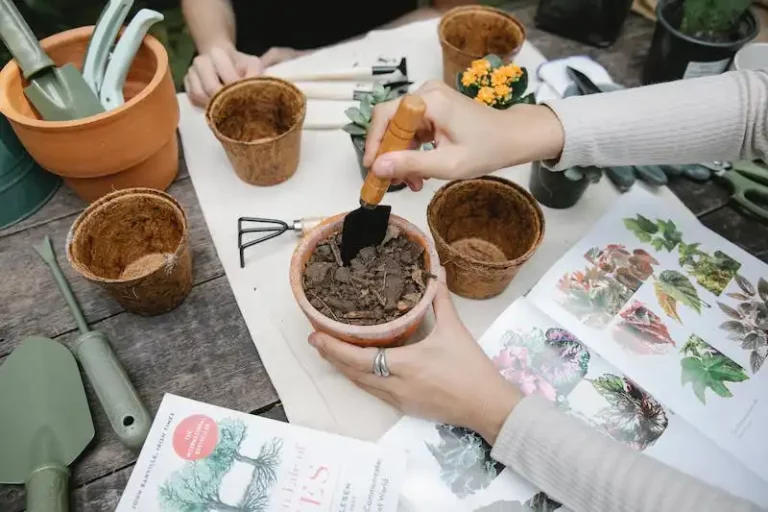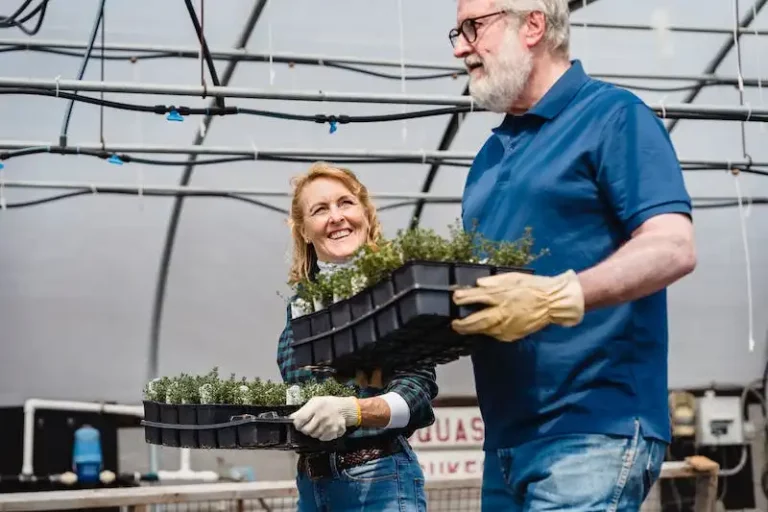The MSU Extension provides valuable resources and information for gardeners looking to cultivate cool-season vegetables. These vegetables are able to tolerate cooler temperatures and are best grown in spring or fall when heat is less likely to be a problem. They include a variety of greens, root crops, and other vegetables that are well-suited to cooler climates.
When selecting cool-season vegetables for your garden, it’s important to consider factors such as soil type, sunlight, and spacing requirements. Most cool-season vegetables prefer well-drained soil that is slightly acidic. They also require at least 6 hours of direct sunlight per day. Proper spacing is essential to ensure that the plants have room to grow and compete for nutrients without overcrowding.
Overwintering is a technique that allows cool-season vegetables to survive through the winter months. This can be accomplished by providing them with protection from frost and freezing temperatures. One method is to use plastic covers to create a mini greenhouse effect and shield the plants from cold conditions. Another approach is to plant the vegetables at least 6-8 weeks before the first frost, allowing them to mature and establish a strong root system before winter arrives.
Harvesting cool-season vegetables is another important aspect of growing them successfully. Most vegetables are best harvested before they bolt, which is when they start to produce flowers and seed. Harvesting them at the right time ensures the best flavor and texture. Some cool-season vegetables can be harvested multiple times, allowing for a continuous supply of fresh produce.
The MSU Extension also provides information on common pests and problems that affect cool-season vegetables. By understanding the types of pests and diseases that can attack these vegetables, gardeners can take steps to prevent and treat these issues. This includes proper crop rotation, selecting disease-resistant varieties, and using organic pest control methods when possible.
Overall, the MSU Extension offers a wealth of resources and knowledge for gardeners interested in growing cool-season vegetables. By following their recommendations and guidelines, gardeners can enjoy a bountiful harvest of nutritious and delicious vegetables year after year.
How to Grow Spinach
Spinach is a green leafy vegetable that is easy to grow in your garden. Whether you are a seasoned gardener or just getting started, growing spinach can be a rewarding experience. Here are some tips to help you get started:
| Growing Process | Storage Tips |
| 1. Spinach can be grown from seeds or plants. If using seeds, plant them in well-drained soil and keep them moist. | – After harvest, remove the outer leaves and store in the refrigerator. Spinach can stay fresh for up to 2 weeks when stored properly. |
| 2. Spinach grows best in cool temperatures, between 35-75 degrees Fahrenheit. It can tolerate frost and is often grown in the fall and winter. | – If you are interested in growing spinach year-round, consider making multiple plantings throughout the season. |
| 3. Spinach plants should be spaced about 6 inches apart to allow for optimal growth. They also need at least 6 hours of sun per day. | – To keep weeds at bay and moisture in, consider using mulches between plants. This will also help regulate the soil temperature. |
| 4. Spinach can be grown in pots or containers if you have limited garden space. Just make sure the pots have good drainage. | – Spinach is a great addition to salads and can be frozen for later use. It is neutral in flavor, so it pairs well with other ingredients. |
| 5. Spinach is a family of plants that includes many different varieties. Some common types include savoy (crinkled leaves) and smooth-leaf. | – Frequently asked questions about growing spinach include how to prevent leaf miners and what temperature is best for growth. |
By following these tips, you’ll be on your way to growing your own fresh spinach. Whether you enjoy it in salads or cooked dishes, spinach is a versatile and nutritious vegetable that is worth adding to your garden.
How to Plant Spinach
If you are interested in growing spinach in your garden, here are some instructions to get you started:
- Choose a cool-season for planting spinach, such as early spring or late summer.
- Find a sunny spot in your garden with well-drained soil.
- Prepare the soil by adding compost or organic matter to improve its quality.
- Plant the spinach seeds about half an inch deep and around 2 inches apart.
- Water the seeds lightly to keep the soil moist but not soaked.
- Cover the seeds with a thin layer of mulch to help retain moisture and deter weed growth.
- Once the plants start to grow, thin them out, leaving around 4-6 inches between each plant.
- Keep the soil consistently moist throughout the growing season.
- Harvest the spinach leaves when they are large enough for your liking, usually around 35-45 days after planting.
- Spinach is a cool-season crop, so it may bolt (send up a flower stalk) as the weather gets warmer. If this happens, the leaves become bitter in flavor. You can try growing spinach again in the fall when temperatures cool down.
- If you are interested in propagating spinach, you can collect the seeds from the plant after it bolts. Just make sure to keep different spinach varieties separated, as they can cross-pollinate.
- To help deter pests like aphids and slugs, consider using row covers or applying organic pest control methods.
- Spinach is a versatile leafy green that can be used in salads, cooked dishes, or even as an ingredient in smoothies.
Good luck with your spinach growing endeavors!
When to Plant
Planting your vegetable seeds at the right time is crucial for a successful harvest. The timing depends on several factors, including the average frost dates in your region, the specific vegetables you are growing, and your desired harvesting schedule.
- Understanding the average frost dates in your region is important, as frost can damage or kill young plants. In general, it is recommended to start planting after the last frost date and before the first frost date in the fall.
- Different vegetables have different temperature preferences. Warm-season vegetables like tomatoes and peppers should be planted after the danger of frost has passed and the soil has warmed up. Cool-season vegetables like lettuce and kale can be planted earlier, as they tolerate colder temperatures.
- It is also important to consider the growth rate of the vegetables you are planting. Some varieties, like radishes and lettuce, can be harvested within a few weeks of planting, while others, like tomatoes and peppers, take longer to mature.
- Proper watering is essential for the growth of your plants. Water them regularly, especially during dry periods, to ensure they have access to enough moisture.
- Weeds can compete with your plants for water, nutrients, and sunlight. Use mulch or remove weeds regularly to support the growth of your vegetables.
- Plant your seeds in rows to maximize the accessibility and productivity of your garden. Leave enough space between each row for easy access and airflow.
- Consider the specific requirements of each vegetable variety. Some varieties, like tomatoes, require staking or trellising for support, while others, like cucumbers, can be grown as sprawling vines.
- Proper soil preparation is essential for the health and productivity of your plants. Test the soil pH and adjust it to a neutral level if necessary. Improve drainage by adding organic matter.
- When storing seeds, keep them in a cool and dry place. Some seeds, like onion and tomato seeds, require refrigeration for optimal storage.
- Insects, pests, and diseases can affect the growth of your plants. Learn about common pests and diseases in your region and take preventative measures, such as using row covers or applying organic pest control methods.
- Overwintering is a technique used to protect certain plants from the cold winter temperatures. Some plants, like kale and spruce, can be left in the garden and will continue to grow the following year.
- If you want to propagate your plants, learn how to properly collect and store seeds. Some plants, like beans and peas, are easy to collect seeds from, while others, like hybrid varieties, may not produce viable seeds.
- Fertilization is important for the healthy growth of your plants. Use organic fertilizers or compost to provide the necessary nutrients.
- Using mulches can help retain moisture, prevent weed growth, and regulate soil temperature. Apply mulch around your plants to provide these benefits.
- Monitor the growth of your plants regularly and take action if any issues appear. Look for signs of nutrient deficiencies, fungal diseases, or pest infestations.
By following these guidelines, you can ensure that you plant your vegetables at the right time and set them up for successful growth and productivity.
Selecting a Planting Site
When selecting a site to plant spinach, there are a few key factors to consider. Spinach is a cool-season vegetable that grows best when temperatures fall between 35 and 75 degrees Fahrenheit. It is a versatile plant that can be easily grown in various conditions.
The first thing to evaluate is the quality of your soil. Spinach prefers well-drained, fertile soils with a pH between 6.0 and 7.0. You can test the pH of your soil using a soil testing kit. If your soil is not ideal, you can amend it by adding compost or other organic matter to improve its structure and fertility.
Next, consider the amount of light that the planting site receives. Spinach needs at least 4-6 hours of direct sunlight daily to grow well. If your site has less sunlight, consider selecting a different location or planting spinach in containers that can be moved to sunnier spots.
Another important factor to consider is water accessibility. Spinach requires consistent moisture to grow properly. Ensure that your planting site can be easily watered, either by hand or with a sprinkler system. Spinach also benefits from mulches or row covers that help retain moisture in the soil.
Before planting, remove any weeds from the site. Weeds compete with spinach for nutrients, water, and light. It is also essential to prepare the soil by loosening it with a garden fork or tiller. You can then amend the soil with compost or a balanced fertilizer according to the instructions provided on the seed packet.
Spinach can be grown in rows or individual containers. If planting in rows, space them about 12-18 inches apart to allow enough room for the plants to grow. When sowing the seeds, plant them about ½ inch deep and 2-3 inches apart within the row. Spinach grows quickly and bolts (goes to seed) in warm temperatures, so avoid planting too late in the season when temperatures start to rise.
Spinach is commonly consumed for its nutritious foliage, but harvesting can be done at various stages. Baby spinach can be harvested when the leaves are small and tender, while mature spinach can be harvested when the leaves are larger. To harvest, simply cut the leaves off at the base using sharp scissors or a knife.
Spinach is susceptible to some diseases and insects, so ensure you are familiar with common pests and diseases in your area. Proper crop rotation and good garden hygiene can help prevent and manage these issues. Additionally, consider using organic pest control methods to avoid chemical use.
Once harvested, spinach can be used fresh in salads, sautéed, or blanched and frozen for later use. Spinach is a versatile vegetable that can be enjoyed in a variety of dishes. It is rich in vitamins and minerals, making it a healthy addition to your diet.
In conclusion, selecting the right planting site for spinach is crucial for a successful and bountiful harvest. Consider factors such as soil quality, light exposure, water accessibility, and pest management. With the right conditions, you can enjoy growing and consuming this nutritious leafy green.


